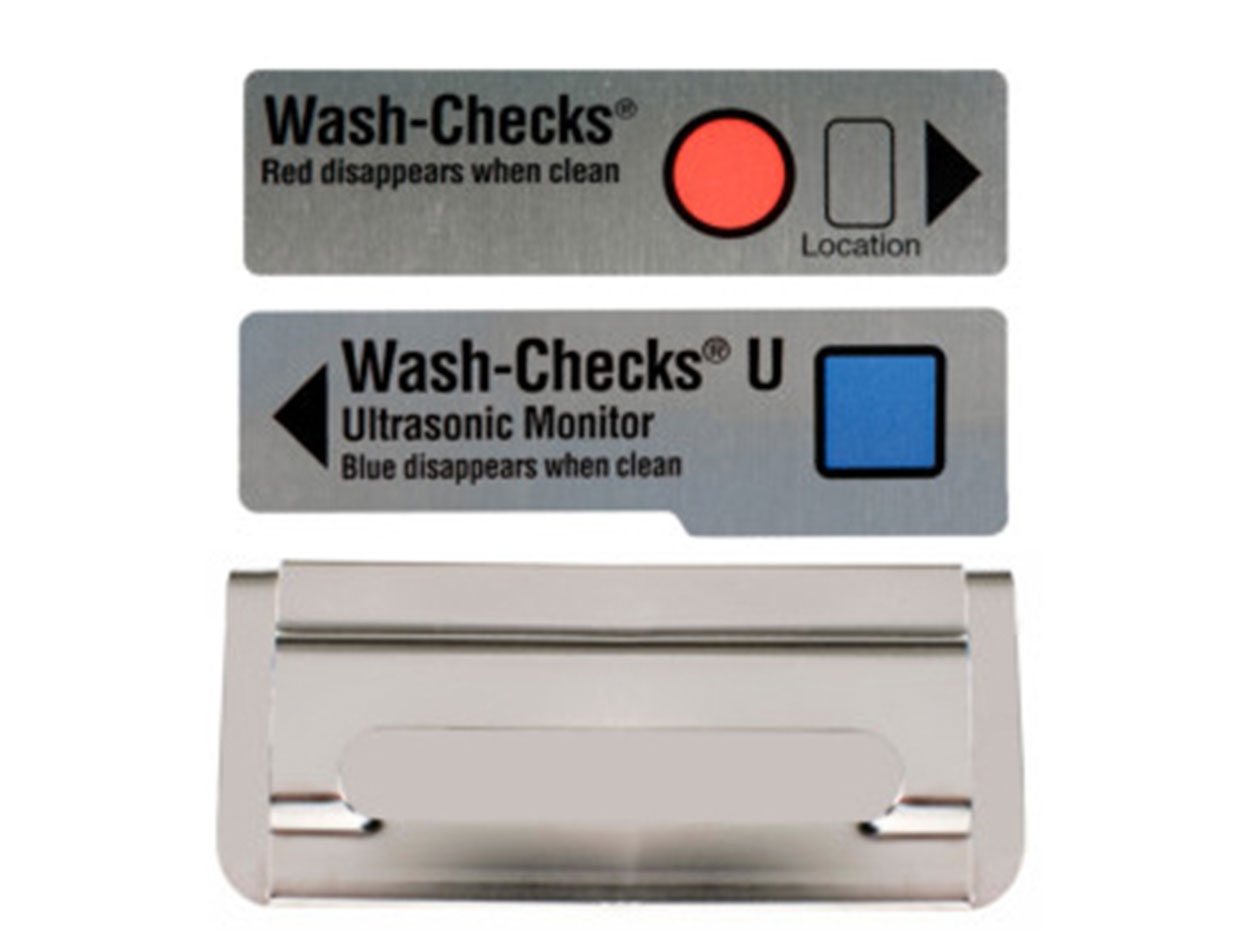
Clean instruments are essential to patient safety, so dentists rely on their washer-disinfectors and ultrasonic cleaners to perform effectively. Two cleaning monitors from Hu-Friedy are designed to reassure practitioners that these tools are getting the job done.
“There are a number of different variables at play during the cleaning process, including the amount of time the cycle runs, the amount of detergent, and whether or not the equipment is functioning,” said Nancy Kane, infection control product manager at Hu-Friedy. “All those things need to work together.”
Each monitor includes a nontoxic and colored test soil that mimics the presence of blood and tissue on an instrument’s surface. Full removal of the test soil indicates an effective cleaning process. Partial removal or no removal at all indicates a failure.
“The only thing that clinicians really do right now to ensure their instruments are clean is look at them,” Kane said. “But not all blood components are visible to the naked eye. This is something that will tell them their process is effective. It’s far better.”
The Wash-Checks monitor targets washer-disinfectors. Its reveals time, temperature, detergent concentration, spray-arm function, and enzyme soak parameter failures. Designed for ultrasonics, the Wash-Checks U addresses failures in cavitation, time, temperature, and detergent amount, as well as an inappropriate number of instruments.
Hu-Friedy recommends that practitioners run a washer-disinfector test in the morning to release equipment for use with a minimum of one monitor per load for load release. The company also suggests using the ultrasonic monitor once daily with an empty load for a machine release and periodically throughout the day with instruments for a load release.
Users insert the monitor with its face up into a holder and then place it into the washer-disinfector or the ultrasonic cleaner. In washer-disinfectors, it must be in a basket on one of the shelves. In ultrasonic cleaners, it must be on top of the instruments and fully covered in solution. If it notes a failure, users may then begin troubleshooting.
“We’ve created a troubleshooting guide that would help guide users through the various different steps of what might have gone wrong based on the results,” Kane said.
“If there were a large failure where none of the soil was removed, that probably would indicate that maybe there was no detergent in there or the piece of equipment was completely not working,” Kane said. “But if some of the soil was removed, then maybe the time wasn’t long enough or you need to change your solution.”
Each single-use card is made of aluminum, so they can be recycled. Cards come in packs of 50. The reusable holder, sold separately, is made of stainless steel. For more, visit hu-friedy.com/cleaningmonitors.
Related Articles
How Do You Treat a Patient with HIV? The Same As Everyone Else
Tiny Bubbles Effectively Clean Instruments and Teeth
Bubbles Do the Hard Work in Ultrasonic Scaling












